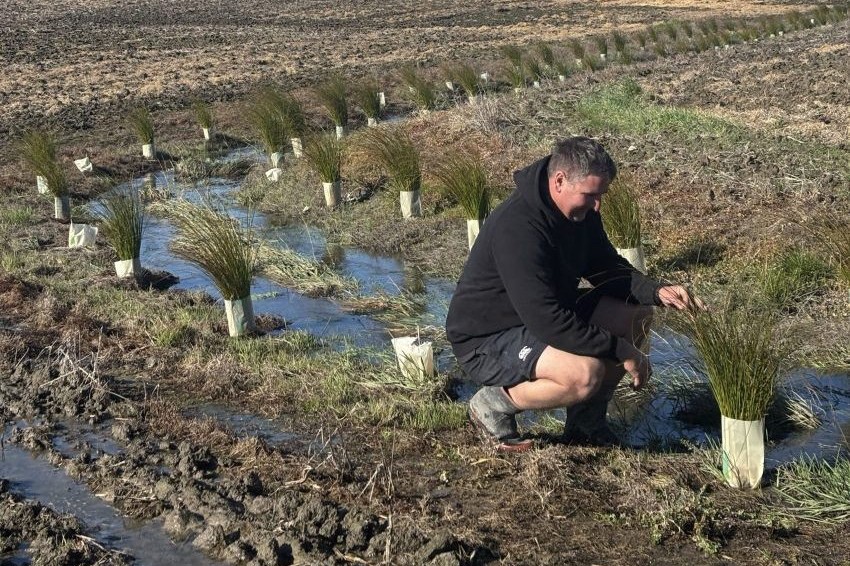I WAS SHOCKED TO READ LATE last year that the Netherlands is not only planning for a massive reduction in livestock numbers, but the new Dutch government is going to buy out farmers to achieve the reduction.
A sum of €25 billion has been earmarked through to 2035 to tempt farmers to walk away from one third of their livestock. It’s worked in the past. By July 2021, 278 pig farms had requested a subsidy from a previous scheme to end their farming operations, leading to a 6.7% reduction in the nation’s pig sector.
Manure is the issue, from a variety of livestock including 3.8 million cows, 102m chickens, 12m pigs and 600,000 goats.
The Netherlands is renowned for being a major exporter of food globally, but with that comes a lot of waste. In 2020 livestock in the Netherlands produced 489m kg of manure, which contains a lot of nitrogen, which emits a lot of ammonia. The Netherlands produces four times the European Union average of nitrogen emissions with farmers carrying 3.8 livestock units per hectare of agricultural area, the most intense in the EU.
The Netherlands is seeking a transition to ‘circular agriculture’ or “Kringlooplandbouw” which aims to balance nature and agriculture.
Feed, manure, soil, animal welfare and other innovations are brought together with non-binding contributions from banks, suppliers, the processing industry, the retail sector and consumers all working together to support the transition, enabling conscious choices of food purchases and products made in the Netherlands with origin labels.
The issue isn’t new for Dutch farmers. Who knew, but the “Netherlands nitrogen crisis” is well documented and has been at the centre of agricultural policy for some time. Excess ammonia deposition into the environment and atmosphere has led to acidification and eutrophication of natural habitat and a loss of biodiversity. To mitigate this, the government wants to halve nitrogen emissions by 2035 with the funds being available for buy-outs, innovation, and technical measures as a way to meet the EU habitats directive.
Environmental regulation has been increasing for some time. Growth in the agricultural sector and development plans on farms are stifled. Farmer protests have been strong to say the least. Yet livestock numbers across the EU have actually been in decline for the past 20 years. A reduction in cows and potentially production, has been rectified by dairy farmers feeding their stock more and better-quality feed. Unfortunately, this has resulted in no reduction in ammonia levels, thus a vicious circle.
The Netherlands is not the only country legislating on pollution caused by agriculture. The United States slaughterhouse industry is facing tougher water pollution control standards with a need to pre-treat wastewater. About 73% of slaughterhouses that pass wastewater on to sewage plants have exceeded the limits of their permits.
Wales is now a nitrate vulnerable zone with tougher rules being set for controlling pollution from slurry and fertiliser. India’s government has introduced guidelines for air and water pollution from the remaining 30% of chicken farms, previously exempt because they were smaller scale.
As a result of tight new policy and the €25b carrot, some Dutch farmers are jumping the fence and moving operations to Belgium, Germany, Denmark and even Canada. But many other EU countries are also suffering from pollution and it is feared the problem is simply being shifted from one country to another.
While Dutch farmers are excellent practitioners, the intense nature of their farming systems may simply exacerbate issues that are ramping up in other places. Austria, Croatia, Germany, Ireland, the Netherlands and Spain already exceeded their EU ammonia emissions levels back in 2017.
Fortunately, NZ farmers have grabbed the bull by the horns and implemented a number of measures to mitigate against pollution from nitrogen. More appropriate forms of irrigation; changes to grazing patterns and moving cattle off vulnerable pastures; new infrastructure like mootels and feed pads; and of course, kilometres of fencing to keep stock away from waterways.
It’s also generally appreciated that NZ has hit peak-cow as dairy cow numbers have at least plateaued if not reduced in recent years. Not that we don’t have our own nitrogenous issues, however, with nitrate levels in some regions being a concern and our own regulations to grapple with.
- Sharl Liebergreen is an AbacusBio consultant.





